Blog
9 Tips to Smash Search-led Conversion Rates in 2019
Are you looking to dramatically improve conversion rates for your online store in 2019? This article reveals savvy tips you could be missing out on in order to gain maximum conversion rates for your store.
A brand new year has kicked off, which means it is time to take control of your e-commerce conversion rates and beat 2018’s results. Don’t let your mistakes from last year bog you down, instead, take a deep breath and get excited for rest of the 2019, the year of your success!
This is the year for your e-commerce store to grow, experience a dramatic surge in traffic coming to your store, notice an increase in exposure around your marketing campaigns and a boost in sales as a result. You need to look back over 2018, review it, figure out exactly what went right, what went wrong and how you can best learn from these results.
Modern shoppers want to find what they want, make it easy for them
We’re human and it’s in our nature to aspire for more relevant choices. This is one of the major reasons the e-commerce world is growing at such speed. Relating to the ease and convenience of shopping online, consumers are choosing to shop less on the high street and buy more items online, having items delivered straight to their door via just a few clicks.
As a result, the e-commerce world is growing year on year, meaning the competition for online retail business is immense (and still exciting).
The amount of competition makes the industry saturated and means it is extremely important for e-commerce CEO’s, managers, marketers and so on… to optimise site search and navigation in order to break through the noise.
In our learning, over 20% of the monthly sessions on your site may use search as primary form of navigation; that increases even up to 60% during the holiday season.
Including search optimisation in your new and improved conversion strategy is critical to your success in 2019.
For that reason, we’ve pulled together 9 tips to guide you through optimising your site search and navigation in order to ensure your site will drive more conversions through search and very few (easy), clicks in 2019.
1. The Perfect Search Bar Position
Search can be the fastest route for customers to discover your products if you do it well. And, finding the “sweet spot” for your search bar is a crucial part of starting your consumer’s discovery.
During the first few seconds of landing on your store, your customers will begin their browsing journey and more often than not, they look for the search bar before anything else.
So, in order to meet your customer’s expectations, you must have a search bar on your site and it should be placed so that it is instantly visible and accessible.
In addition, the visibility of your search bar on all devices such as mobile or tablet is not to be neglected. Having an optimised and user-friendly search bar across all mediums provides consumers with a seamless and uninterrupted shopping experience throughout their customer journey.
Bonus tip: always use a search icon (i.e. magnifying glass) when optimising your search bar for mobile or tablet. This will highlight the search bar when it has shrunk in size and is no longer visible.
By having a fully optimised search bar across all devices, you will be seen as a highly competitive brand and will delight your customers; keeping them coming back for more.
Whereas online retailers that only focus on optimising search on desktops will suffer from a loss in sales as a result, (even the biggest brands).
Examples
In the example below, Bathroom Takeaway use a distinctly large search bar, perfectly placed at the top of the landing page, in centre view for desktops. The size and placing of their search bar makes a big difference to visibility and persuades shoppers to enter a query as soon as they land on the site.
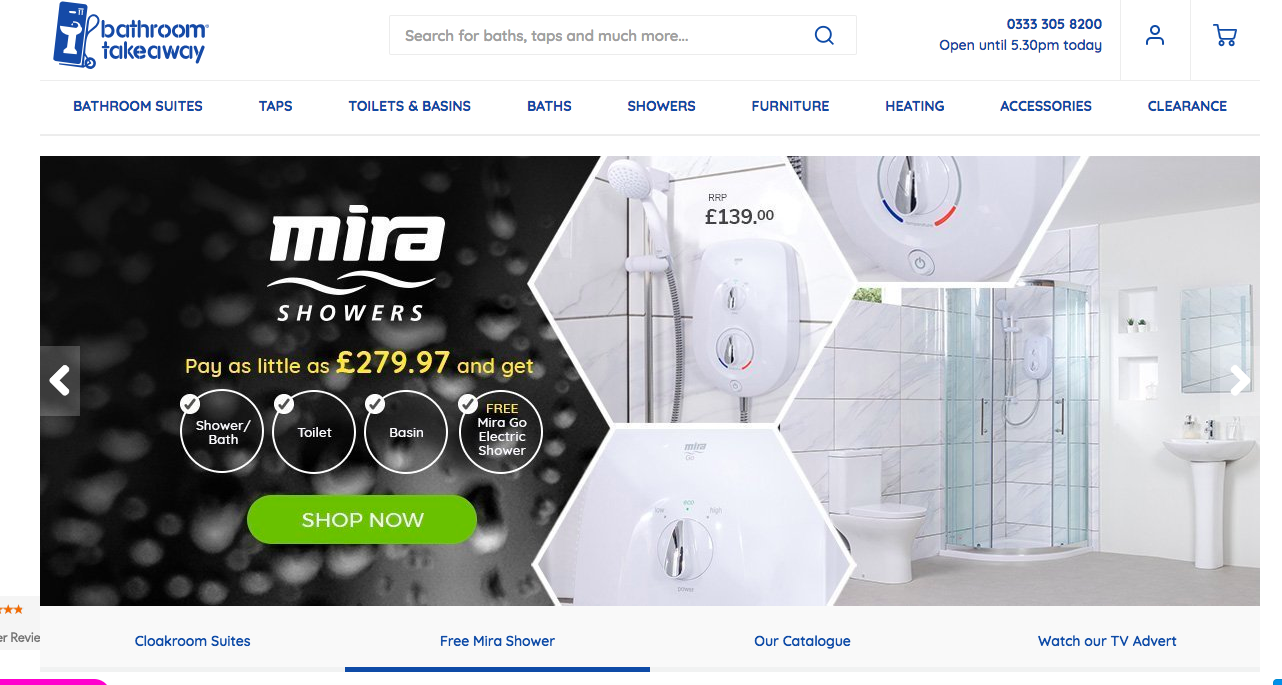
Mobile optimisation
In relation to mobile search, Soak & Sleep have optimised their site to be fully responsive for mobile shoppers by using an elongated search bar. This enhances the user experience for shoppers using their mobiles phones to search for, or filter to specific products they want to find.
Visitors on mobile are on the move and could exist even faster from the store if they don’t get their relevant discovery done real quick. Having very apparent search bar gives them an opportunity to access the entire catalog by just writing a keyword that transmits the shopping intent.
2. Quick Search Overlay
As pictured below, you can make the customer journey more enjoyable by speeding up the search process with a quick search overlay. The search overlay feature allows your customers to dive into your catalogue faster.
As shown below, by searching “sofa” in the search bar on Made.com, the search bar reveals a drop down overlay featuring product images and details within this category. These suggestions kick in after just one keystroke in the search bar, offering the shopper multiple options within search.
This feature reduces the time in which customers are searching for products and filtering through category pages, making it easy and convenient, boosting your sales as a result.
Bonus tip: FYI even the giants like Amazon do not bring relevant products on single click in search box. This is because of the billions of products in it’s catalogue. So, if you want your e-commerce store to overtake the powers of Amazon, consider utilising a quick search overlay.
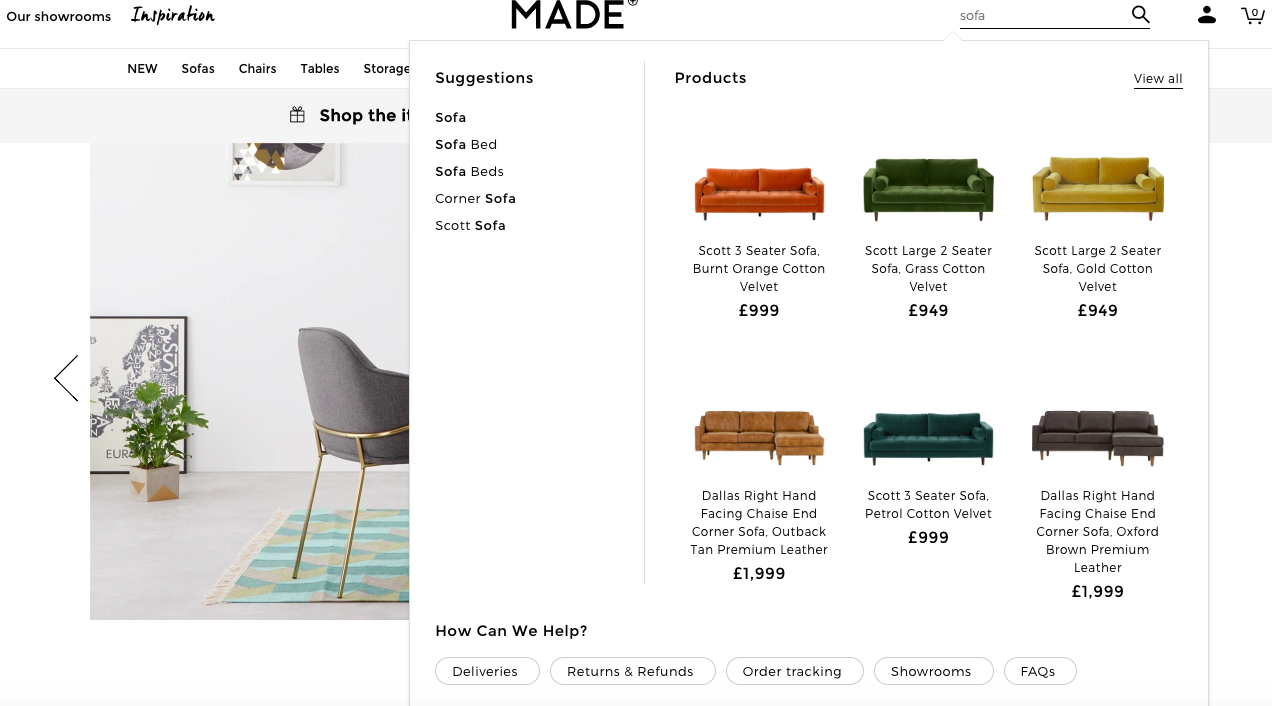
3. Placeholder Text
Placeholder text within search is an extremely powerful technique to provoke engagement on your online store. Placeholder text is the copy placed in the search bar for customers to read before they make a search query.
However, many big brands don’t recognise the power of persuasive placeholder text and are still using simple keywords within their search bar, such as a simple command like “search here”.
For example, pre-suggested topics or categories within the search bar will prompt shoppers to navigate where you want them to go and give your customers the confidence to make more detailed search queries.
You could start by adding popular search suggestions within your placeholder text to drive consumers to products you know historically perform well or sell quickly.
Take a look at ASOS for example. This online store uses the placeholder text to encourage shoppers to search for more than just products using a clever sentence ‘Search for items, brands and inspiration’, letting the shopper know they can search for more than products.
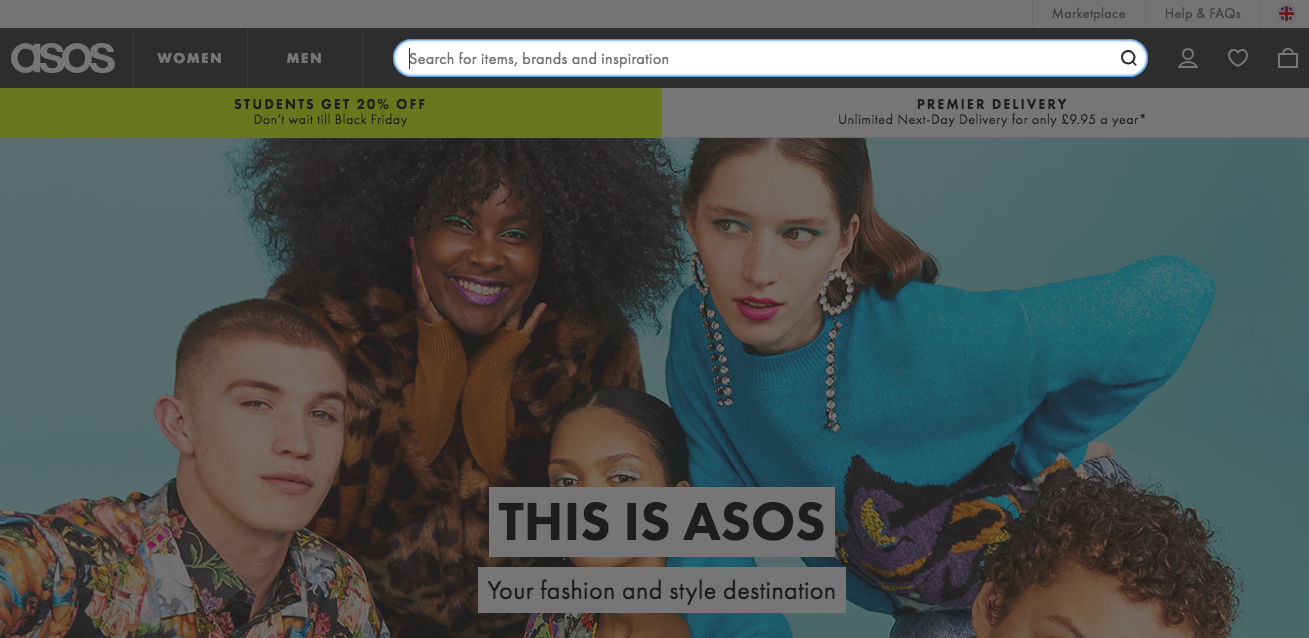
4. Personalised Trending Search
If you want to enhance your customer’s journey even further, you should consider personalising your search according to your customer’s individual shopping behaviours.
With the power of machine learning, Klevu allows online retailers to display “machine learned” recommendations within search. This speeds up the buying process for your customers by giving them more opportunity to quickly and seamlessly navigate to the checkout.
How is this possible? Machines learn your customer’s shopping behaviours and browsing history and utilizes this pre-learned information to build customer profiles. These profiles are then tapped into in order to show returning customers products they will be ready to buy: even before they start searching.
To clarify, based on observations from cookies, visitor sessions, ip-addresses, clicks and checkouts, it is possible for machine learning to build a demographic characteristic of your visitors and optimise search results accordingly.
Not only that but search results become “ultra personalised” as they spend more time on your store.
Bonus tip: consumers using search on your site are very likely to know exactly what they are looking for. This makes them high intent buyers. Consider using personalised search to recommend higher margin products, or more expensive products to profile the items you want to sell first and increase the average order value of that product.
Bulletproof Coffee utilises this method very well by prompting consumers to look at popular searches and trending products in the search bar overlay without shoppers entering a single character in the search bar.
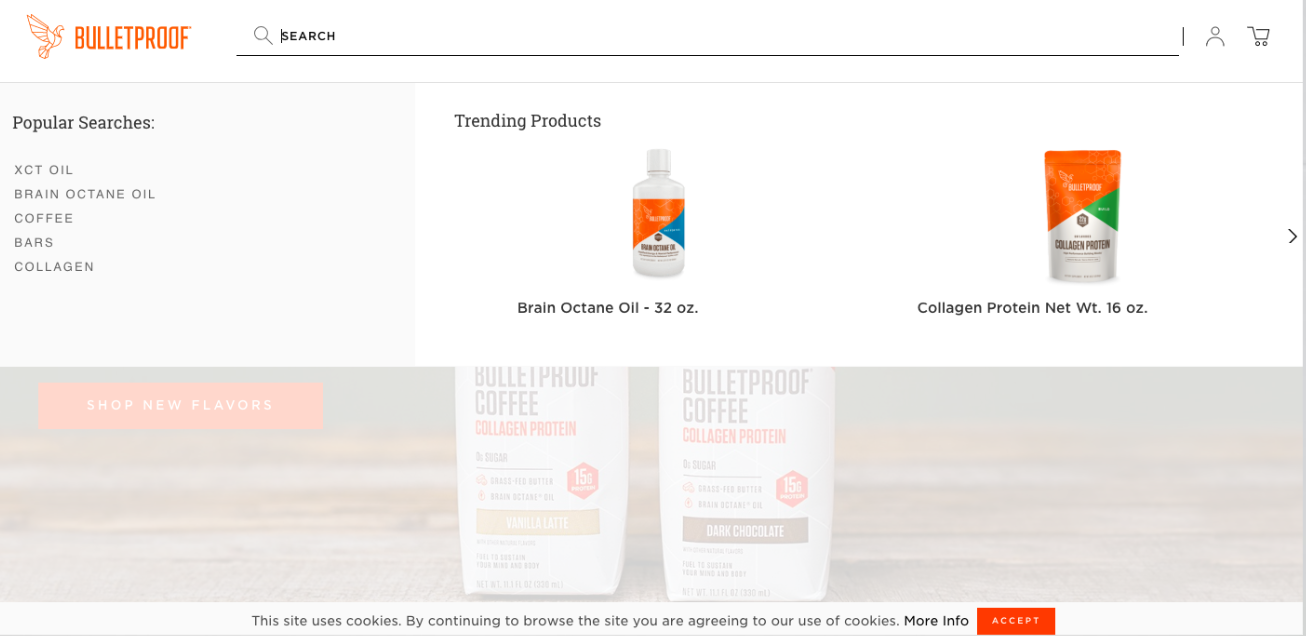
5. Consistent Marketing Strategy
In order to continue building trust and strong, meaningful relationships with your customers, it is critical to make sure that your marketing campaigns across all channels are consistent and aligned. This means you must keep your merchandising marketing team aware of any other marketing campaigns you are running: online and offline.
You can do this by simply sharing an editorial calendar and having regular meetings to discuss marketing strategy.
In relation to search: the products you promote within the search result need to reflect your overall marketing strategy. For example, if your customers receive an email promoting a sale for backpacks, it would be disappointing for them to find the sale was not visible when visiting your online store via the links in the email.
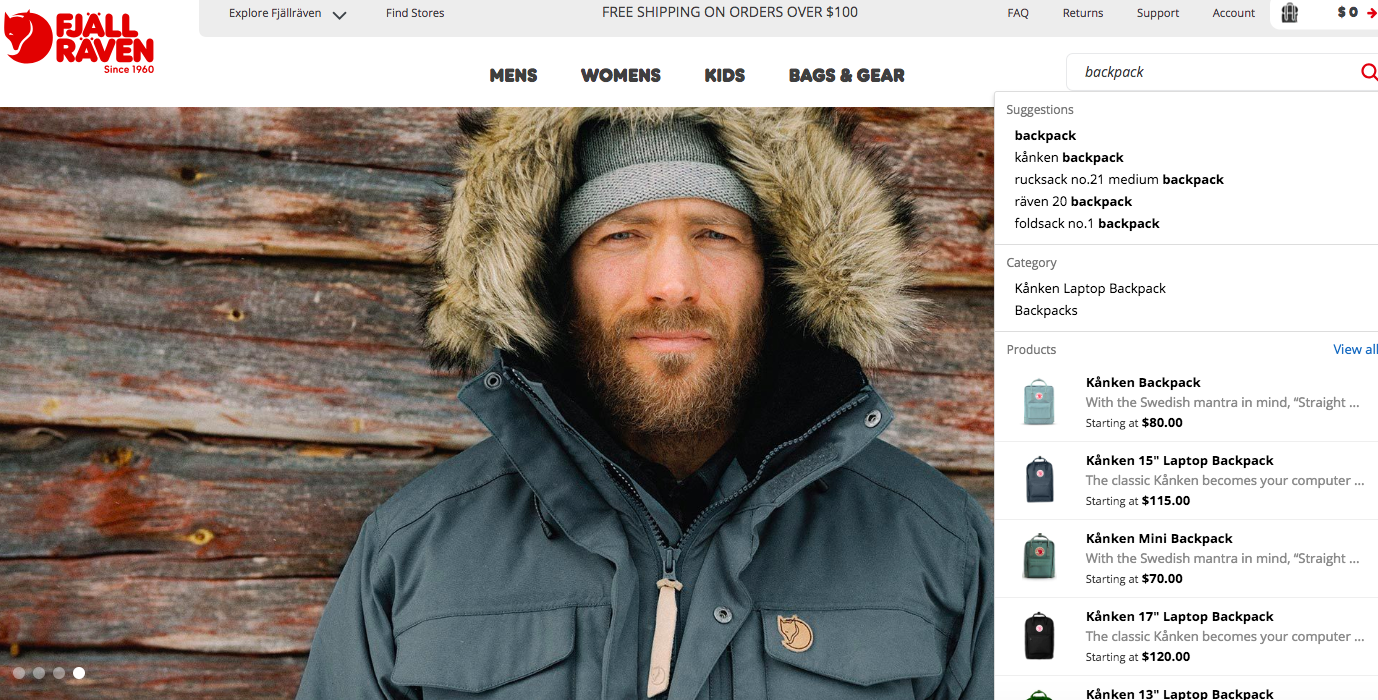
With smart search tools like Klevu, you can apply “boosting rules” to products to improve visibility within the search bar meaning customers will instantly see promotions.
As you can see from Fjallraven, product listings can be optimised within the dropdown overlay to reflect stock levels, best sellers, what’s trending and promotions. These must be aligned with all of your marketing campaigns on mediums such as social media, email, promotional banners and anything else you’re doing.
6. Promotional Banners
Consumers today are always looking for the best deal online. Shoppers want to get the most value for their money and since the Christmas holiday season has come to an end, your customers are looking to spend their Christmas money now.
This means now is the time to incorporate promotional banners in your online store in order to break through the noise and stand out from competing brands and their promotions.
Even if you have the BEST deal, it isn’t going to be effective without it being visible everywhere. And guess what? Banners are big, they are shiny and they are obvious.
Visually appealing banners showing promotions are eye catching when they are carefully and strategically placed. So, consider featuring a banner for specific search queries on your search overlay and category pages. This will synchronize campaigns and showcase your unmissable deals.
It makes sense: customers searching for a brand, product or item already have high-intent to buy. So, placing a promotional offer in front of them by using a promotional banner will further instill interest, and persuade the shopper to buy, increasing your sales as a result.
In the image below, you can see that Daily Steals display a promotional banner in the search results when shoppers type in “apple” as the search query.
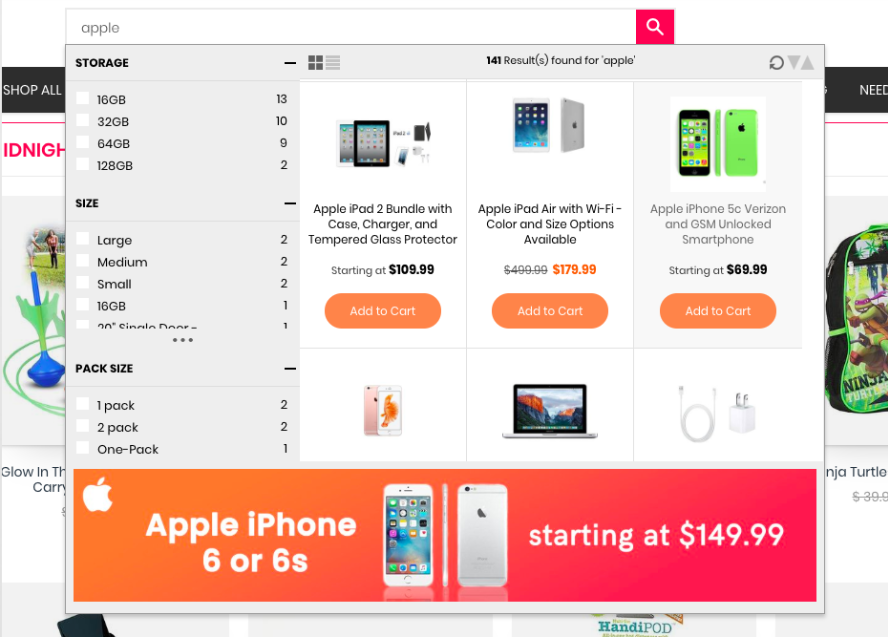
7. Plan for Errors
Humans aren’t only lazy but they are also prone to making mistakes. And, guess what, your shoppers will make mistakes when searching for products. They will misspell product or brand names, for instance, when searching for want they want to find on your online store.
This means “no results found” frequency might be quite high when analysing your data connected to search results. Fear not, by having a third party solution to handle “error tolerance” your store can pick up on simple mistakes so you can offer an uninterrupted customer journey, even when shoppers make mistakes.

As you can see in the image above, when there is no result found, there is nothing offered to the shopper. The word ‘cactus’ has returned no results and there are no alternative products displayed. This is a massive opportunity missed to engage and promote similar products to the customer, running the risk of a loss in sales.
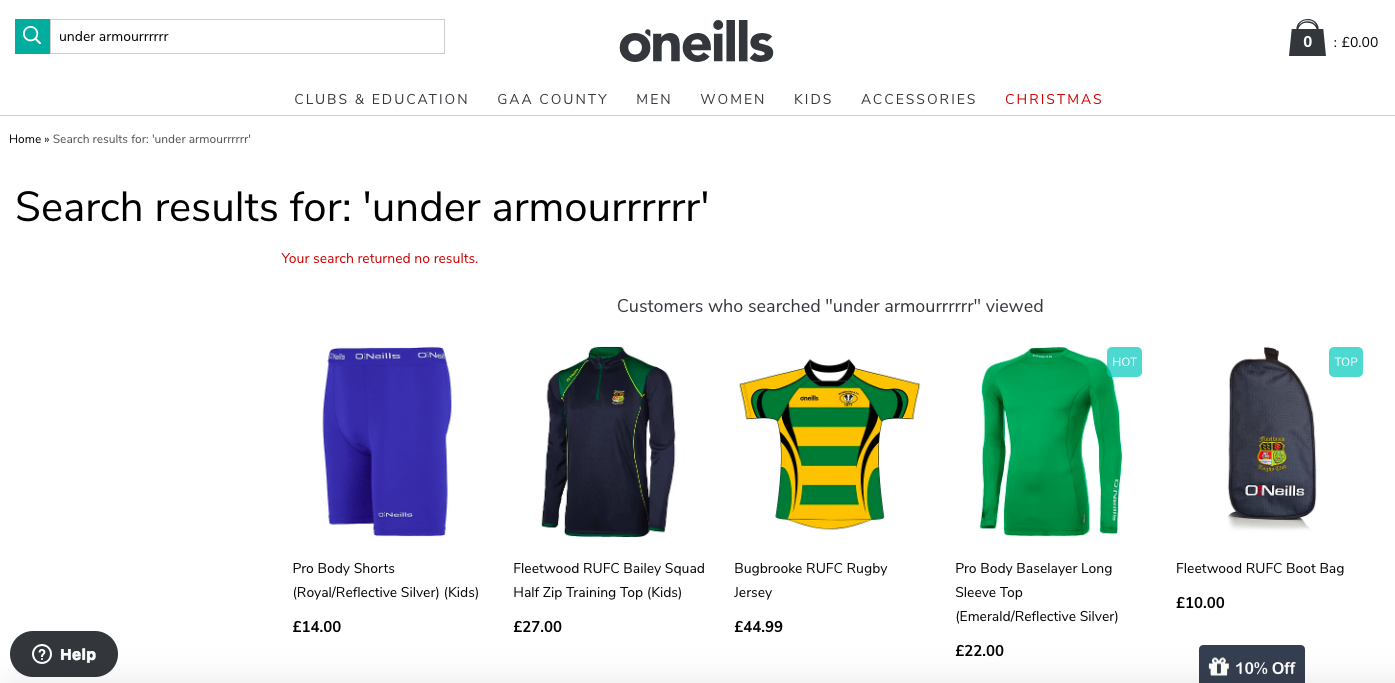
In comparison, O’neills have taken advantage of this functionality to engage with shoppers when they make mistakes. As you can see from the image above, O’neills have displayed alternative products for the error search query “under armourrrrr”. Suggestions include similar products and items that have been viewed by customers who apparently made the same error.
8. Slang Words
Having good quality data in your catalogue does not guarantee customers will necessarily find items they are looking for. Most standard out of the box solutions are keyword matching, meaning your customer will have to type in the exact match to find the product.
However, if you think outside of the box and add extra synonyms to describe your products such as niche abbreviations of a product, or industry specific slang terms, your customers will find more products to buy.
Top tip: keep an eye out for new slang terms, continue to enhance your product catalogue and content pages to make sure they are being found in search.
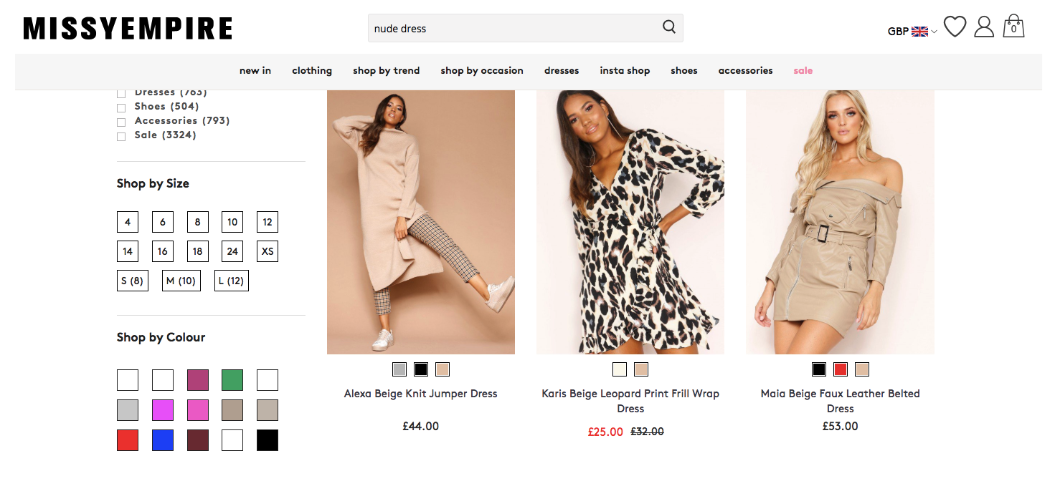
9. Review Site Search Data Weekly
You must review and analyse your site search data on a weekly bases in order to pinpoint what’s going right, what’s going wrong and how you can learn from this to improve your site search optimisation.
As pictured below, you can do this from your search Google Analytics dashboard: providing you with invaluable insights that will help you understand your customer’s shopping habits and know exactly what they are looking for on your site.
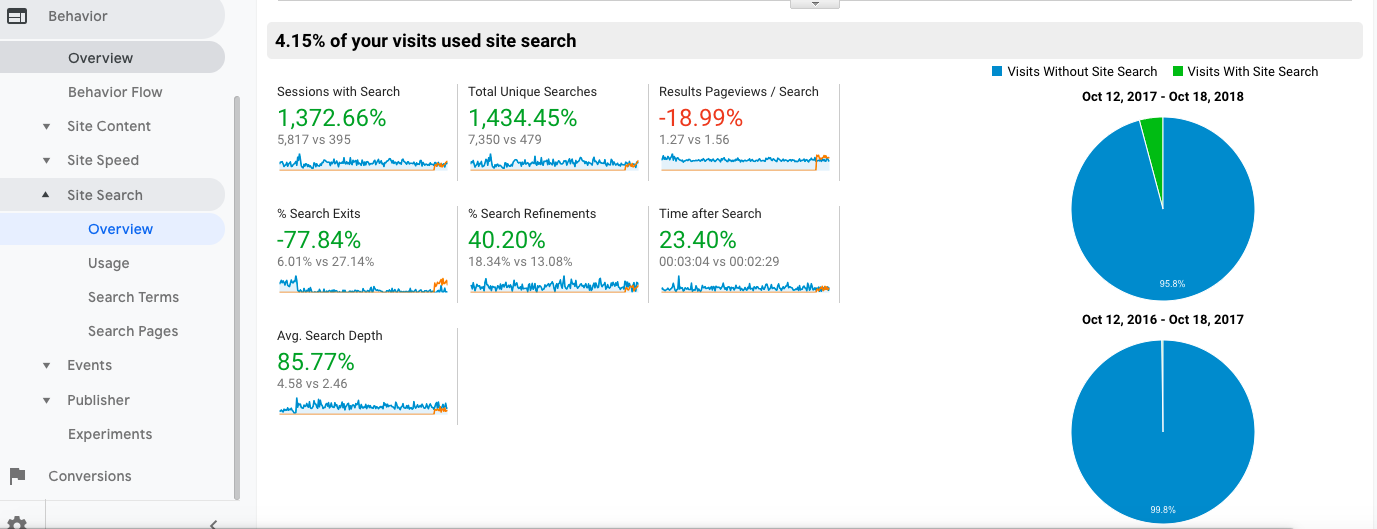
Core metrics to look out for include:
- Queries,
- Clicks,
- Add to basket
- Conversions
- Core behavioural data in Google Analytics.
Use the data to take the lead and drive conversions like never before so that your e-commerce business stays ahead, beats the competition and is successful in 2019.
Summary
Search experience is of paramount importance to higher conversions for online shops. It not only affects conversion rates but it also impacts the experience shoppers have with your brand post-sale. In this article, we provide 9 important tips to uplift the search performance on store to smash higher conversions in 2019.
The tips in this article cover some of the detailed aspects of search including, (but not limited to) search box placeholder, responsiveness on devices, personalisation, quick search overlay, banners, error tolerance and insights from shopper’s search behaviour.
Get ready for a great year!
Contributing Authors: Nilay Oza & Amy Marks


